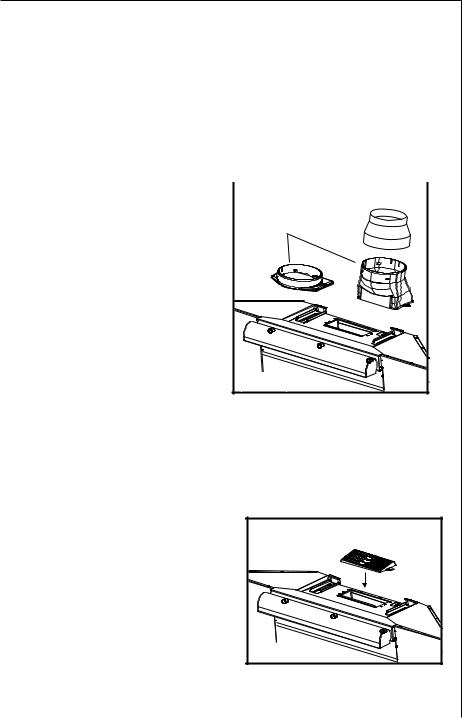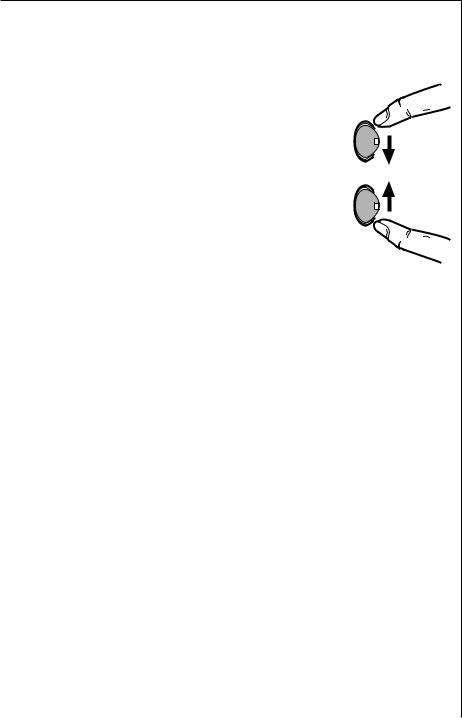AEG DD8795-M/CH, DD8765-M/CH Manual

DD8794 - DD 8795 CHDD 8795
DD 8765
Dunstabzugshaube
Afzuigkap
Hotte
Cooker Hood
Montageund Gebrauchsanweisung Installatieen gebruiksaanwijzing Notice d’utilisation et d’installation Operating and Installation Instructions

Contents
Safety warnings |
57 |
For the user |
57 |
For the installer |
57 |
Description of the Appliance |
59 |
Extractor version |
59 |
Filter Version |
59 |
Control Panel |
60 |
Switching on the hood |
61 |
Switching on the light |
61 |
Control device for grease or charcoal filter |
61 |
Led signal for grease filter |
61 |
Led signal for charcoal filter |
61 |
Re-setting the saturation signal |
61 |
Maintenance and care |
62 |
Cleaning the hood |
62 |
Metal grease filter |
62 |
Removing the frontal screens: |
62 |
Removing the metal grease filter |
63 |
Charcoal filter |
64 |
Changing the light bulb |
65 |
Changing the upper light – DD 8765 |
65 |
Changing the side light – DD 8765 |
66 |
Special accessories |
66 |
Technical assistance service |
67 |
Technical Specifications |
68 |
Mounting accessories included |
68 |
Electrical connection |
69 |
Wall mounting |
70 |
Printed on recycled paper
AEG - putting words into action
56

Safety warnings
For the user
•The cooker hood is designed to extract unpleasant odours from the kitchen, it will not extract steam.
•Always cover heating elements, to prevent excess heat from damaging the appliance. In the case of oil, gas and coal fired cookers it is essential to avoid open flames.
•Also, when frying, keep the deep frying pan on the cooker top/cooker under careful control.
•The hot oil in the frying pan might ignite due to overheating.
•The risk of self-ignition increases when the oil being used is dirty.
•It is extremely important to note that overheating can cause a fire.
•Never carry out any flambé cooking under the hood.
•Always disconnect the unit from the power supply before carrying out any work on the hood, including replacing the light bulb (take the cartridge fuse out of the fuse holder or switch off the automatic circuit breaker).
•It is very important to clean the hood and replace the filter at the recommended intervals. Failure to do so could cause grease deposits to build up, resulting in a fire hazard.
For the installer
•When used as an extractor unit, the hood must be fitted with a 150mm diameter hose.
•Should there already be a pipe of diameter 125 mm that ducts to the outside through the walls or roof, it is possible to use the 150/125 mm reduction flange provided (DD 8794 and DD 8795 only). In this case the hood will be slightly noisier.
•When installing the hood, make sure you respect the following minimum distance from the top edge of the cooking hob/ring surfaces:
electric cookers |
300 mm |
•The national Standard on fuel-burning systems specifies a maximum depression of 0.04 mbar in such rooms.
•The air outlet must not be connected to chimney flues or combustion gas ducts. The air outlet must under no circumstances be connected to ventilation ducts for rooms in which fuel-burning appliances are installed.
•The air outlet installation must comply with the regulations laid down by the relevant authorities.
57

•When the unit is used in its extractor version, a sufficiently large ventilation hole must be provided, with dimensions that are approximately the same as the outlet hole.
•National and regional building regulations impose a number of restrictions on using hoods and fuel-burning appliances connected to a chimney, such as coal or oil room-heaters and gas fires, in the same room.
•Hoods can only be used safely with appliances connected to a chimney if the room and/or flat (air/environment combination) is ventilated from outside using a suitable ventilation hole approximately 500-600 cm2 large to avoid the possibility of a depression being created during operation of the hood.
•If you have any doubts, contact the relevant controlling authority or building inspector’s office.
•Since the rule for rooms with fuel burning appliances is “outlet hole of the same size as the ventilation hole”, a hole of 500-600 cm2, which is to say a larger hole, could reduce the performance of the extractor hood.
•If the hood is used in its filtering function, it will operate simply and safely in the above conditions without the need for any of the aforementioned measures.
•When the hood is used in its extractor function, the following rules must be followed to obtain optimal operation:
—short and straight outlet hose
—keep bends in outlet hose to a minimum
—never install the hoses with an acute angle, they must always follow a gentle curve.
—keep the hose as large as possible (preferably the same diameter as the outlet hole).
•Failure to observe these basic instructions will drastically reduce the performance and increase the noise levels of the extractor hood.
58

Description of the Appliance
•The hood is supplied as an extractor unit and can also be used with a filtering function by fitting one charcoal filter.
•You will need an original AEG charcoal filter for this function (Available from your local AEG Service Force Centre).
Extractor version
• In this version fumes are |
|
|
extracted to the outside via |
reduction |
|
a hose connected to the |
||
coupling ring flange |
||
coupling ring. Fig. 1. |
•In order to obtain the best performance the hose should have a diameter
equal to the outlet hole.
•Should there already be a pipe of diameter 125 mm
that ducts to the outside through the walls or roof, it
is possible to use the 150/
125 mm reduction flange provided (DD 8794 and DD
8795 only). In this case the hood will be slightly noisier.
Filter Version |
|
|
• The air is filtered through a |
|
|
charcoal filter and returned to |
Deflector |
|
the kitchen. |
||
|
||
• You will need an original AEG |
|
|
charcoal filter for the filtering |
|
|
function. (See Special |
|
|
Accessories). |
|
|
• Fix the deflector using 2 screws |
|
|
Ø 3.5x9.5 mm. Fig. 2. |
Fig. 2 |
|
|
59

Control Panel
•Best results are obtained by using a low speed for normal conditions and a high speed when odours are more concentrated.
Turn the hood on a few minutes before you start cooking, you will then get an under pressure in the kitchen. The hood should be left on after cooking for about 15 minutes or until all the odours have disappeared.
•The hood operation can be controlled via the control ball or with the remote control (the remote control is a special accessory and is ordered separately).
Every change (changing speed, switching on the lights, etc.) is recognizable from the variation of light emitted by the control ball and by an acoustic signal.
The control ball is located below on the right side of the cooker hood.
The control ball is also a light signal :
•No signal :
The hood is switched off.
•Static green light :
Hood is switched on at power level 1 (minimum).
•Static orange light :
Hood is switched on at power level 2 (medium).
•Static red light :
Hood is switched on at power level 3 (maximum).
•Flashing red light :
Hood is switched on at intensive power level (timed at 5 minutes)
•Flashing green light :
Indicates the grease filter saturation - clean the grease filter
•Flashing orange light :
Indicates the charcoal filter saturation - clean or replace the charcoal filter.
Attention!
The control ball flashes orange to indicate the saturation of the charcoal filter even if the hood is used in the extractor version and no charcoal filter is fitted.
In this case, perform the signal reset operation as follows: select the intensive speed (the control ball lights up with a red flashing light), depress again and hold depressed for about 3 seconds until an audible signal indicates the reset has taken place.
60

Switching on the hood - Fig. 3
The control ball is a balancer switch.
Depressing the control ball repeatedly towards the bottom, switches on the hood and you may select the motor level desired, depressing once again the hood switches off.
Switching on the light - Fig. 3
Depress the control ball towards the top : once for submersed lighting,
once again for full lighting,
depress again to switch off the light.
Indicator light for grease or charcoal filter
The air duct, in this hood, includes a device that signals when the filter requires cleaning or changing .
depress towards the bottom to switch on the hood.
depress towards the top to switch on the lights
Fig. 3
Led signal for grease filter
The LED signal flickers (flickering green light) when the grease filter requires cleaning, occurs at about 40 operating hours.
Ensure that the indicator light is checked each time the hood is used.
Led signal for charcoal filter
The LED signal flickers (flickering orange light) when the charcoal filter requires cleaning, occurs at about 160 operating hours.
Ensure that the indicator light is checked each time the hood is used.
Re-setting the saturation signal
After cleaning or replacing the filter, select the intensive speed (the control ball lights up with a red flashing light), depress again and hold depressed for about 3 seconds until an audible signal indicates the reset has taken place.
61
